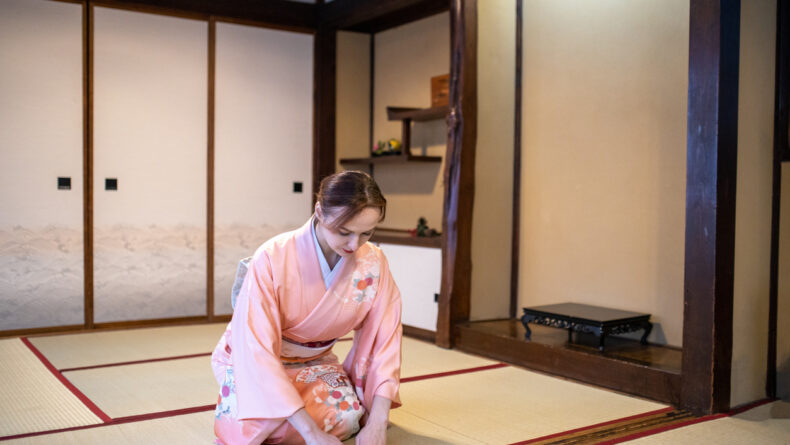
Originally a luxury that only the wealthy could afford, tatami space remains its exclusivity in the present time. But instead of the value in money, it is now treasured for its tradition and adaptability worth. The Tatami mats are made from woven straw with a rice straw core and have been a staple in Japanese homes for centuries.
They are typically about 90 cm by 180 cm in size, although the dimensions can vary by region (sizes listed below). Japanese-style spaces and tatami are closely attached, as thick as thieves. Even today, tatami mats are widely used in houses, (traditional inns), , and even restaurants and cafes.

The tatami room is also still present in many housing buildings in Japan, regardless of how modernly chic the houses are. While the room strongly boosts the space’s Japanese heritage essence, its great functionality and usage adaptability ensure its relevance in current dwellings. The Japanese word traces its origin back to the verb 畳む ( ; to fold).
This comes from the simple fact that when not in use, the mats were often folded or stacked. for They were designed to offer a cushion against the hard wooden or dirt floors of early Japanese homes. During the Muromachi Period (1336–1573), the tatami room was mainly used by the elite as a study or meditation room.
Over time, it gradually became more common among the general population, expanding into living and sleeping areas. By the Edo Period (1603–1868), washitsu had become a quintessential part of Japanese home design. Tatami mats have evolved in modern times.
While traditional mats were relatively thin at first, modern tatami is much thicker. It resembles more of a panel rather than the lightweight mats of the past. They are still made from straw at their core, but many are now layered with denser materials, such as compressed wood or foam, to provide more durability and insulation.
is , whether it’s a washitsu or not. This system helps people visualize space in a very practical way— For instance, a room might be described as 六畳 ( ), which literally means “six tatami mats.” If you were to measure it out, the floor would have enough space to fit six tatami mats.
A typical living room in Japan is often about 八畳 ( ; “eight tatami mats.”) This is about 4.5 by 3.
6 meters (roughly 15 by 12 feet) in size. Once you get used to these sizes, you, too, will be able to describe space without needing to pull out a ruler! The use of tatami as flooring in a washitsu also determines the kind of furniture Japanese people use. In general, people often find themselves getting comfortable with light, portable and minimal fixtures around their dwellings.
. S 襖 ( . his allows 押入れ ( Do you want to live in a house with a tatami room? Check for your new tatami home.
.














